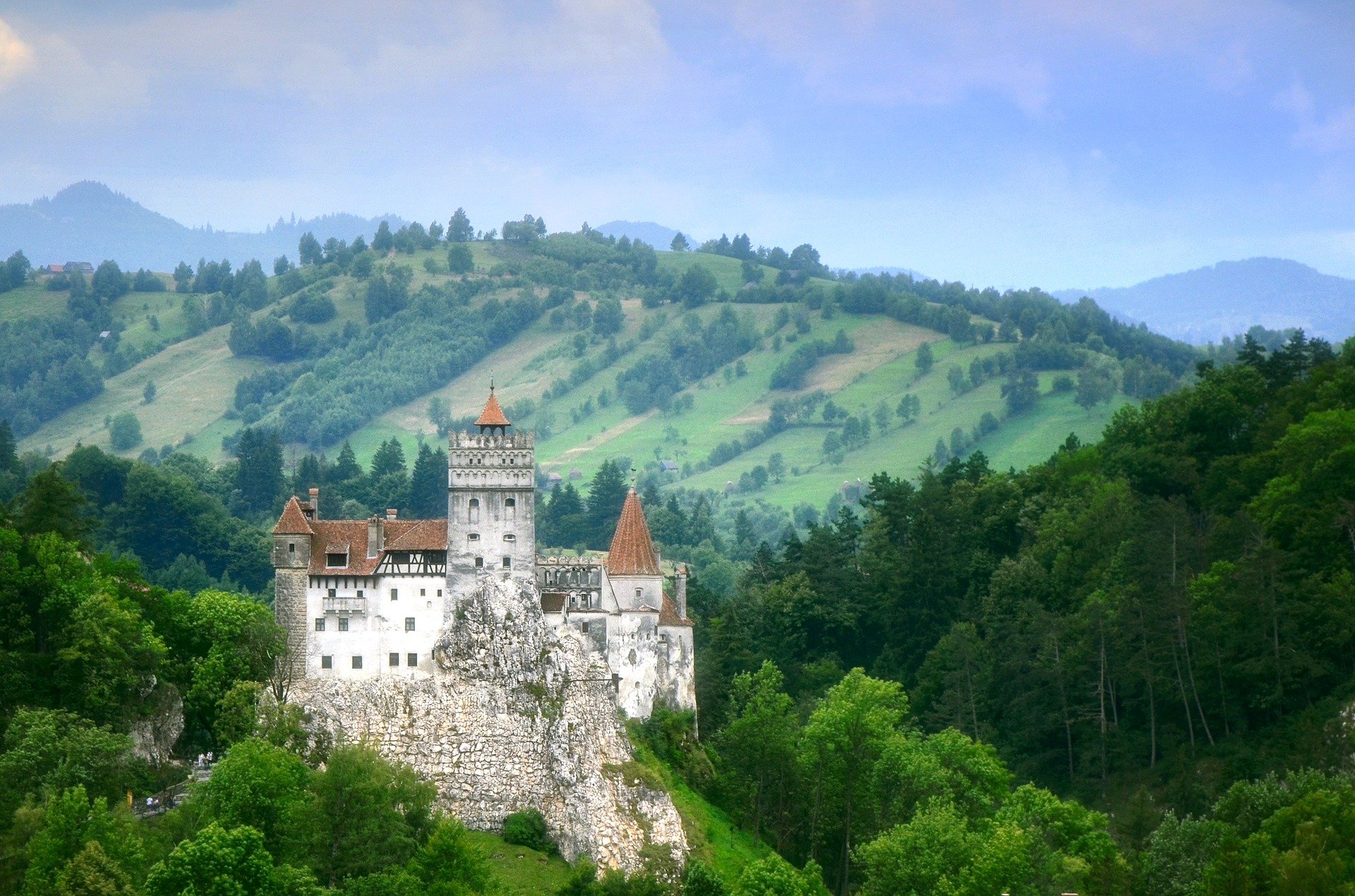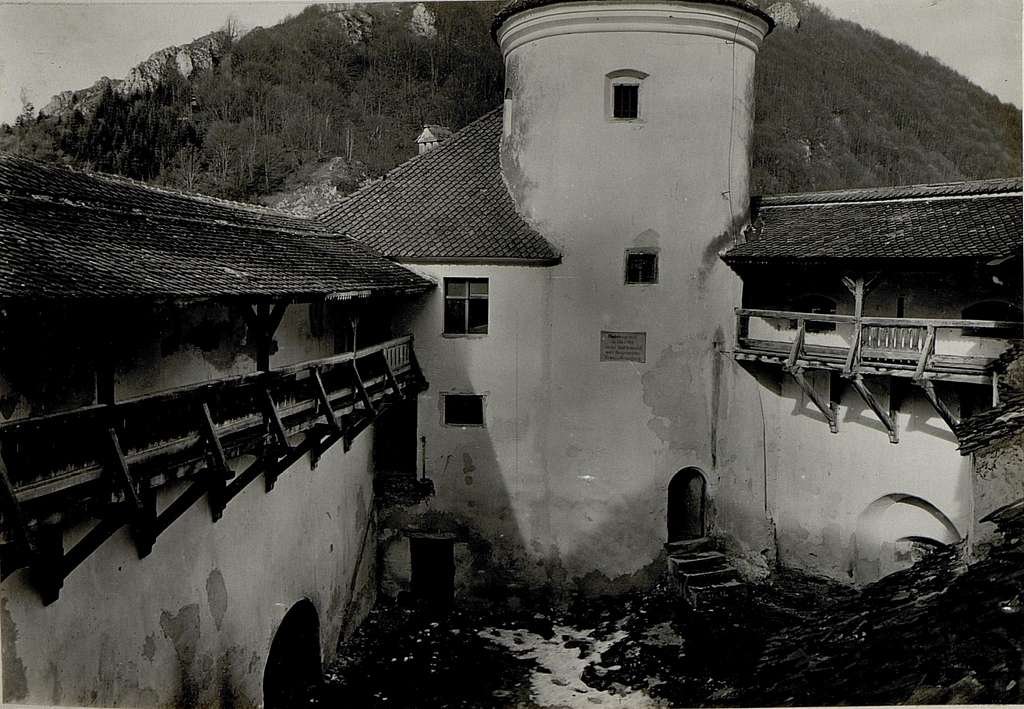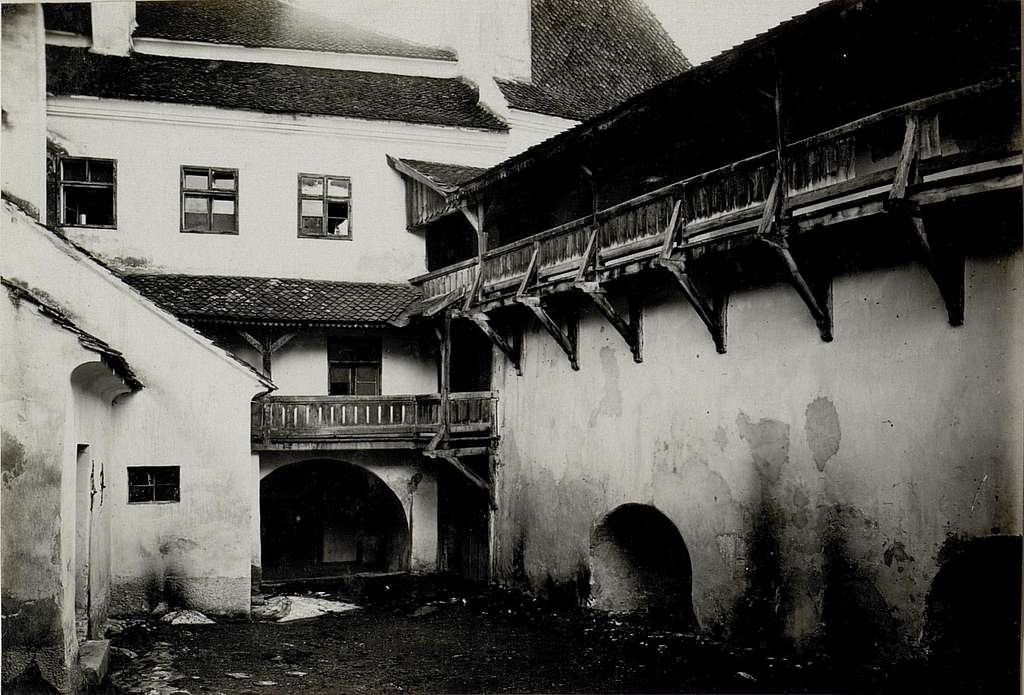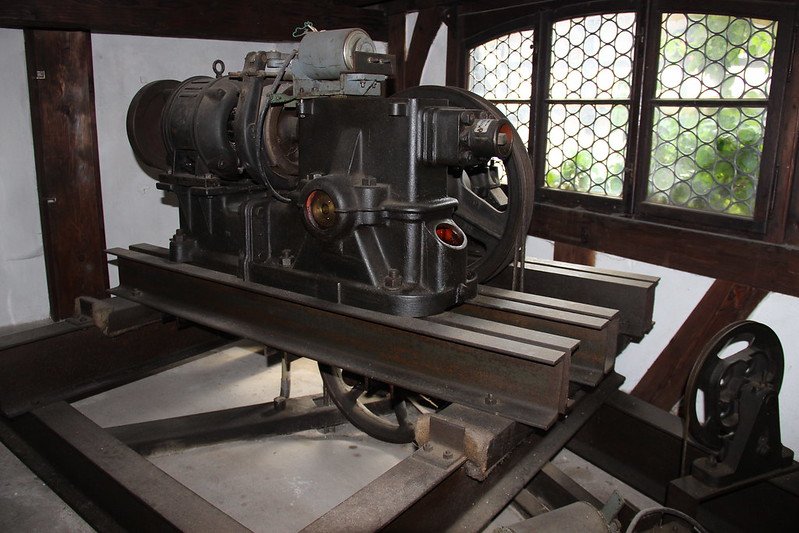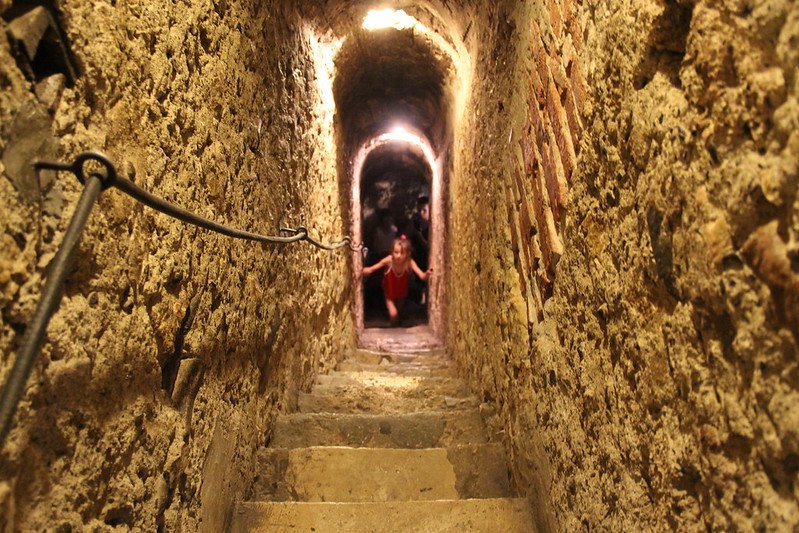Bran Castle
High in the mountain there is a little castle
That little castle has had a big impact, both on the people living in and around it and on the literature we read and our own lore and culture.
Construction of Bran Fortress
Our Bran Castle episode is brought to you by one of our twitter followers. If you also have a suggestion for a destination then don’t be afraid to reach out, and it could have its very own episode.
You’ll find the medieval stronghold known as Bran Castle if you’re wandering around the Transylvanian Alps near a town called Brasov in what is pretty much central Romania.
Of course, most people will know Bran Castle as Dracula’s Castle, and it’s this association, or lack thereof, that makes it one of Romania’s top places to see. More on that in a bit though.
As we move through history, you’ll see the place change hands quite a few times, so much so, that there’s a fair few hands I’ve had to leave out if we’re to get through it all in a reasonable time frame.
If we head back to the early 13th century, we’ll find a trade route running through the Carpathian Mountains, and the earliest known fortress near Bran Pass, that’s the gorge that the castle protects, would have begun life as a wooden citadel, built around 1211 by the Knights of the Teutonic Order. Now the Teutons were in the area until about 1226, and by 1377 we’ve got Louis I of Hungary, also known as Louis I of Anjou, authorising the Transylvanian Saxons in Brasov to build a fortress in an attempt to stop the northern expansion of the Ottoman Empire.
The construction of the fortress was complete in 1388, and its purpose was for both strategic and economic reasons. Bran Fortress was to intercept those Ottomans attempting to travel into Transylvania, as well as serving as a customs centre for non-Ottomans. This positioning proved to be incredibly useful, especially as the Bran Passage was one of the most important trading and entry routes to Transylvania. Which means that Bran Fortress only held more military significance the longer it stood.
Over the hundreds of years the place has been standing, modifications have come and gone, and at times Bran Fortress was a real focal point for the conflicts taking place in the region, especially in 1442 when the Ottomans tried their luck but were stopped when they failed to take Bran Fortress by siege. Seems like the plan to minimise the Ottoman expansion had worked. I certainly don’t hear of any Ottoman’s in North-Eastern Europe these days. Being a customs and trading centre came in really handy as well, especially in terms of creating income for the local towns surrounding the fortress.
So the Fortress has changed from this King to that King to that Prince to this Prince, and we don’t pick up the story again until several years later in 1498, when something quite interesting and a little bit different happens.
So basically, the King of Hungary, owner of Bran Fortress at the time, had come across a bit of a cash flow problem. He was running out of money pretty quickly, so he made a deal with the people of Brasov, who we remember had built the Fortress in the first place and so had a soft spot for the place.
The people of Brasov would get full control of Bran Fortress for 10 years and the King of Hungary would get 1000 florins. At the time a fair bit of money. At the end of the 10 years, the King could pay the 1000 florins back to Brasov and receive his looked-after castle in return. 10 years is plenty of time to save up 1000 florins right? Well, not for the King of Hungary who probably should have picked up a copy of the Barefoot Investor (here’s a link for those financially savvy Destination: Historians). Because when the 10 years was up, instead of paying Brasov back, the King actually asked for another 1000 florins and in return the Fortress would continue to be under Brasov’s control for another 10 years. And this didn’t just happen once, after the second lot of 10 years, the king was still struggling and so continued to borrow against the Fortress extending the deal in return for more of that cash-in-hand.
But after about 25 years of this, the people of Brasov said enough is enough, we can’t just keep loaning you money. So they called an end to the agreement, and since the King couldn’t pay back the thousands of florins he’d taken as a loan, the residents of Brasov turned their temporary ownership of the Fortress permanent.
With the town of Brasov in charge of the management of Bran Fortress, great things happened and Bran really started to flourish. Income increased by a considerable amount, the military role of the Fortress was lessened replaced by administrative and politically minded roles, and the place was kept in good nick.
As we head into the 1520s the politics of the area started to change. The Ottoman Empire was at its height, yet still unable to break past Bran Fortress, and while the Polish and Hungarian crowns were seeing quite a steep decline, Russia and Austria were enjoying quite the growth in strength and influence.
The geo-political changes in the surrounds of Romania brought with it quite a stressful political climate and increased conflict. But Bran Fortress wasn’t one to stick its heels in the dirt, it actually survived pretty well by oscillating its support from one side to another, really to any side that furthered the interests of the residents of Brasov. So we actually see some wanting to pass through Bran Gorge get a free go of it, while others had massive amounts of resistance depending on who the town was backing at the time.
As we come into the 17th century, we see an interesting change in how Bran Fortress is named, the ‘Fortress’ starts to ease out and Bran Castle becomes more common.
So as the Hapsburgs took control of the region in the late 17th century, and we see borders of Transylvania move around in the 1800s, Bran Castle kind of loses a fair bit of military importance. It was no longer on a border between states and therefore its usefulness as a military stronghold all of a sudden wasn’t in the spot that was needed, and there’s no point having a customs point in the middle of a state, so the way the castle could adapt was to turn to more administrative matters and a place of residence.
Queen Marie, Princess Ileana and Bran Castle
So now we find ourselves in the 1920s, Transylvania is now part of Greater Romania, and Bran Castle has found its way into the possession of Queen Marie of Greater Romania. In fact the town of Brasov gave her Bran Castle as a thank you for her work to unify Romania. Here’s how Marie was described in the Castle’s deed:
…the great queen who … spread her blessing everywhere she walked, thus winning, with an irresistible momentum, the hearts of the entire country’s population.
So clearly this monarch was extremely well liked. And she wasted no time in turning Bran Castle into quite a lovely royal summer residence, one in which she spent a great deal of her time.
Marie did quite a bit to the place, making it not just a little Fortress, but a royal escape equipped with everything one could want. The Czech architect Karl Liman, who is also known for his work on the Peles and Pelisor Castles, came in and helped Marie add a modern outbuilding, a Tea House, which would later become a restaurant, they enlarged the windows, built new stairs, a church was added along with staff housing, a guest house, stables and of course a garage.
But Queen Marie did a lot more than just build a whole lot of new stuff, she also set about modernising the place. All sorts of fancy stuff were added to the castle to make it a comfortable place to live, and that included a power plant. 1932 saw a turbine power plant constructed with the express purpose of providing local communities like Bran, Simon and Moieciu with power. And the Castle wasn’t forgotten either, an 85 horsepower hydroelectric power station was built on the Turcu River in the same year to give power to the castle. Queen Marie seemed to be ahead of her time with the renewables. But Marie didn’t stop there, telephone lines were added, hot and cold water, electricity, sewage, gas, everything one could need to live the comfortable life.
And it wasn’t just the castle that she transformed, Bran Castle Park was given a good makeover as well. The place was turned into an English Park complete with ponds. Over 200 types of fruit trees were planted, and the ponds were populated with swans and trout. What more could you want?!
Here's Queen Marie recalling when Bran Castle, what she called
the little fortress forgotten across the mountains,
entered her life:
Many years ago, in a trip over the border, I saw it standing in stark loneliness on that cliff and wondered how it would feel to govern such a fortress and to transform it into a home. How wonderful it would be to revive a small medieval castle, a true fairy tale. And the unbelievable truly happened: two years after the war, the authorities of Brasov came to me in a solemn mission and offered Bran Castle to me, as an absolute gift, to be entirely mine.
You can really see the love that the Queen had for Bran Castle, her little oasis. And Marie really turned Bran Castle into an amazing royal residence.
But sadly, all Queen’s must go at some point, and Queen Marie died in 1938, leaving Bran Castle to be inherited by her daughter Princess Ileana. Thankfully Ileana loved Bran Castle just as much as her mother and even turned the place into a hospital during the Second World War, where she treated wounded soldiers. She named the hospital, ‘The Hospital of the Queen’s Heart’ after her mother.
But all good things must come to an end eventually, and Bran Castle’s good thing’s end seemed to be hurried along by the new communist regime forcing Ileana and her family out of the country when it took control in 1948. And as they are want to do, this communist regime seized all royal properties, including Bran Castle.
Ileana was forced to flee to the United States, where she managed to provide for herself and her children by speaking about her life. By 1961, Ileana was living in a Convent, where she was actually ordained as Mother Alexandra. She died in 1991 and is buried in the convent that she founded and was abbess. And added to her grave was a small box that contains earth from the foot of Bran Castle, collected just as she was being exiled, so that a part of her beloved country and castle would always be close to her.
Since 1956, however, the communists had opened Bran Castle as a museum to the public, with three interesting departments: Royal Heritage, Medieval Customs and Ethnography. I suppose this really does encapsulate the life of Bran Castle pretty well, so I’ll give the communists that.
As we get into the 21st century, we see the post-communist Romanian government hand over the deed of the castle to Ileana’s surviving children in 2009, Archduke Dominic of Habsburg, Archduchess Maria Magdelena and Archduchess Elisabeth.
Throughout the years, Bran Castle has continued to operate as a museum, but with a whole lot more of it devoted to Queen Marie of Romania. It’s especially a popular place on Halloween, where one can retrace the steps of one of Bram Stoker’s characters as he wanders through the castle found in the middle of the Carpathian Mountains.
Descriptions of Bran Castle
So let’s get into some of the changing descriptions that can found in literature throughout the ages of Bran Castle.
In the second half of the 16th century, Transylvania became quite an interest for the papacy, especially as their expansion of religious reform continued to spread. So naturally the Catholic Church sent out diplomatic missionaries to gather information on the area’s resources, as the Catholic Church in the time of the Crusades was fond of doing. And that’s where we come across Giovanni-Andrea Gromo, an Italian Captain who described Bran Fortress as:
A very strong castle sitting on a cliff at a great height, in the middle of a narrow valley … separated from two other mountains by very narrow gorges, inaccessible due to their sharp walls and the dense forest. This castle is called Terschio (Bran), is very well guarded, and is always equipped with everything one would need to ensure a strong defence by the town council of Brasov.
What a fascinating description by Gromo. He really does capture the remoteness and inaccessibility of the positioning of the Castle, demonstrating how Bran Castle would really have been such a powerful spot to control. No wonder the place changed hands so many times.
Next up we have an account from Pierre Lescalopier, a Parisian magistrate crossing Transylvania on a diplomatic mission to Constantinople.
The first guard of Transylvania [was found] in a small castle without doors, which they enter by climbing a ladder that they pull back up afterwards. The castle is called Terchvar (Bran).
What an interesting description of the early Bran Fortress, and probably why the place was such a stronghold, no ground level doors.
In fact, if we take a look at an inventory of the weapons that the Fortress had at its disposal in 1577 we will find it surprisingly small. There were 22 gun-glints on pikes and long spears. So clearly, much like the pass at Thermopylae, the location of Bran Fortress at Bran Gorge was chosen for the ability to defend the spot with a limited amount of personnel. Geography really does seem to have played the main character in all of Bran’s history.
As we fast forward about a decade, we end up in 1585, where a one Jacques de Bongars wrote this about what he knew to be Tarschiwar:
A castle sitting in the mountains in order to guard this gorge. Some of the castle’s garrison leave the castle in the morning, others in the evening, in order to comb the woods and mountains. If they encounter anybody who is not from the area, they take him prisoner … they do this so that everyone is forced to pass through the castle gorge, which is also the only point of passage for carriages or horses.
So Bran Castle really had a monopoly on passage through the area, and this would have only been aided by the immediate geography, and is probably the reason why it was such an important point during the fights and wars, and would have given anyone in control of Bran a lot of power and influence.
Here's the famous historian and military architect Filippo Pigafetta saying what I just said, but he said it in 1595.
From Brasov we finally arrived at the military camp … through an opening in the mountains … There, a castle has been constructed, which nearly shuts off the valley because, using its artillery, it closes the gorge; it is called Törcsvar (Bran Fortress). This is where the customs tax is paid.
One thing that’s been interesting about all these descriptions of Bran Castle is its changing names. In fact they are the names of Bran Fortress just in the many languages of the surrounding areas and invading forces, and they all mean Bran Castle.
Parts of the Castle
As we’ve already established, Bran Castle is in the most strategic spot you can find. In the middle of a narrow gorge, in the middle of a pretty major passageway through the Carpathian Mountains.
The Castle itself is not the size of your traditional castles, in fact, in relation to them, Bran Castle is pretty small, but it's still big enough to hold a couple of secrets within its 57 rooms and many hidden corners.
One of the main drawcards for Bran Castle is it’s Time Tunnel. Starting out life as a well, which was originally dug when the fortress was being built in 1377, the well was pretty deep at 60 feet and went straight through solid rock. Naturally it would have been used for its function as a well, until 1930, when Queen Marie took ownership of the castle and thought that an elevator would be much more useful than a well. What’s pretty exciting about this though, apart from having a lift in your home, is that while she was remodelling the Castle, Marie found a secret room carved into the wall of the well, just above the water line. It’s believed that this is where the occupants would hide the castle’s treasures when under attack.
And to get everything modernised, Queen Marie brought in the architect Karl Liman, who helped with the remodelling of the Castle, including the lift that would allow the Queen to go from the top of the castle down to the gardens at the base of the cliff without climbing all those damn stairs.
When the Royal Family were forced out in 1948, the lift pretty much was abandoned. But in 2018, a modern new lift was brought in and it is properly kitted out. Naturally it has smoke and earthquake detection sensors to keep those inside safe. But it’s also got everything you would need to experience a multimedia exhibition while you ride the 31.5 metres between the two stops. Designed specially for Bran Castle, the Time Tunnel was a complete Romanian project, the music score you hear was composed and produced by Romanian composers, in order to experience the history and culture of Bran Castle in the best way possible. The Time Tunnel is just one of many things tourists can experience when visiting Bran Castle.
Another is the ‘History of dreads in Transylvania’ exhibition. Throughout the 4th floor, you can immerse yourself into the myths and fears of the local lore. From the historiography of the 15th century, to the Count Dracula character created by Bram Stoker in the 19th century, you can see writings from the vampires inspiration in Vlad the Impaler, which we’ll get into in a little bit.
The rooms of Bran Castle have a minimalistic style to them, which apparently is typical of the 14th century, when the castle was first built. Original features, like the brickwork, arched windows and doorways, turrets and spires still exist and can be marvelled at. You may even find a certain charm in the dark wood panelling and white walls.
If spooky and creepy is more your thing, then the Dungeon is where you want to be at. You can see a display of torture instruments that have been used on real people, so think about that while you’re trying to get to sleep tonight.
A somewhat sad story is that of Queen Marie’s heart. Before her death, the Queen asked that when her time came she wished for her heart to be removed from her body and interred in a chapel in the town of Balchik, which you find near the Black Sea, and where the queen’s favourite summer home stood. Here’s Princess Ileana explaining her mother’s reasoning:
When my mother died in 1938 … she asked that her heart would not be buried in the church at Curtea de Arges … but rather that it be extracted from her body and placed in a small church she had built on the Black Sea shore. She said she would be more accessible there than in the royal graveyard; that throughout her life people could approach her heart with their pains and desires, and she wished for it to remain the same after her death
But in 1940, when Balchik was claimed by Bulgaria, the Queen’s heart was forced to be moved to Bran Castle, which is where you can find it today at the castle’s chapel. While the Queen’s body lies at the Curtea de Arges Cathedral with all the other Romanian monarchs.
Many years later, Princess Ileana would describe the order of events like this:
In 1940, the cruel decision was made … allotting part of Romania to the Bulgarians. Several hours before Bulgaria took possession of that land, which Romania had so unfairly been forced to give away under blackmail, the faithful adjutant of my mother, General Zwiedineck, took the case containing my mother’s heart and brought it to Bran. I then placed it in our little wooden church … There, she remains aside, alone; a relic easily accessible to everybody.
Clearly something very personal for Ileana, and why wouldn’t it be, it’s her country and her mother’s heart. We can only thank the quick thinking General for grabbing the Queen’s heart, so that, maybe while not in the place she desired, her heart can still be available for her people.
Bran Castle and Dracula
While Bran Castle might also be known to some as Dracula’s Castle, the place actually doesn’t really have a link to the fictional story apart from being a castle in the isolated Carpathian Mountains.
As I’m sure we all know, Dracula is a fictional character created by Bram Stoker in his novel, Dracula. He’s a Transylvanian Count who lives in a castle located high above a valley. Sounds pretty similar to this one place I know.
Dracula is a vampire a couple hundred years old, he lives in his decaying castle, and if you read the novel you’ll find out all sorts of tidbits about this fascinating character.
The character of Count Dracula first appeared in the zeitgeist when Stoker’s novel was published in 1897. The confusion probably started with his name. ‘Dracula’, or the Romanian ‘Dracul’, could be translated as ‘the Devil’, but it was also the title of a Romanian knightly order, ‘Order of the Dragon’. Where we think Stoker got the inspiration for the rest of his story, is from Transylvanian legends about ghosts and vampires. In fact, the villages near Bran are known to believe in the ‘strigoi’.
It's believed that these strigoi were around about half a century ago, that they seemed normal during the day, but at night, while they slept, their souls would up and leave their bodies and go around the village tormenting people in their sleep. Here’s how Stoker describes it:
The undead suffer from the curse of immortality, they pass from one period to another, multiplying their victims, augmenting the evil in the world…
And it’s these local myths that Dracula is derived from.
The character that Stoker created is often confused with a real-life person known as Vlad Tepes, or Vlad the Impaler, who has gone by Vlad Dracul which is probably where the confusion comes from. Vlad was also a Transylvanian Prince who had a castle in the area, Poenari Castle, which is now in ruins. It seems that Stoker did make an effort to not link the two together, and you will be hard-pressed to find any link, apart from the similar names.
And the same kinda goes with Bran Castle, while there are rumours that Stoker may have used Bran Castle as his inspiration for his description of Dracula’s Castle, it’s a bit unfounded, and it’s probably because Bran Castle is the only castle in Transylvania that kind of fits Stoker’s description.
Here's how Stoker describes Dracula’s abode:
The castle is on the very edge of a terrible precipice … As far as the eye can reach is a sea of green tree-tops, with occasionally a deep rift where there is a chasm. Here and there are silver threads where the rivers wind in deep gorges through the forests.
Now if we compare that description with the descriptions of Bran Castle we heard earlier, we can kind of see how people might link the two. Both isolated, both sitting on the only way through a gorge, it makes sense.
While Vlad may not be Dracula and while Bran Castle may not be Dracula’s castle, Vlad Tepes does actually have a link to Bran Castle. While in charge, Vlad led a couple of campaigns to punish the people of Brasov for not doing what he wanted. The surviving documents don’t say if Vlad ever captured and was in control of Bran Castle, but we do know that in 1562, the Hungarian King, Matei Corvin, captured Vlad Tepes and may have held him in Bran Castle for about two months before moving him to Visegrad Fortress.
Vlad, himself, wasn’t the greatest guy, he kinda liked to torture people and had a thing for impaling his enemies. He was also famous for beheading, burning, boiling and skinning those he wasn’t too fond of. An example of this is when he filled a forest full of corpses to repel the invading Ottoman Army. I guess that’s one way to say ‘you are not welcome here’. And yet, despite being this sadistic and deeply disturbed individual, Vlad was actually pretty great as a military leader and his people saw him as a hero. I guess standards differ between now and the 16th century, or then again, maybe they don’t.
What’s interesting about Dracula’s connection to Bran Castle, is that Bram Stoker actually never visited Romania. And despite the very similar ‘Bran’ and ‘Bram’, perhaps that’s what drew Stoker to Bran’s description in the first place. I guess we’ll never really know.
When visiting Bran Castle for yourself, I suggest you plan ahead, for a major tourist attraction for the country public transport is seriously lacking, and when I say ‘seriously lacking’ I mean there is none, so you’ll need to drive or you’re looking at a 30km hike from Brasov.
So now that you know how to distinguish Bran Castle from Bram Stoker’s Dracula, you’ll be able to appreciate the place and its unique history all the more.
-
‘Dracula’s Castle’ offers tourists Covid shots - The Guardian
The Man Who Owns Dracula’s Castle Wants to Rebrand it - Vanity Fair
What’s it like to party at Dracula’s Castle in Romania? - CNN Travel
Spend the night at Dracula’s castle in Transylvania - USA Today
Dracula’s Castle - The County Press
From Windsor to Castle Dracula: a new book charts the making of a dazzling Romanian Queen - Tatler
-
Disclosure: As an affiliate marketer, we may receive a commission on products that you purchase through clicking on links within this website.



